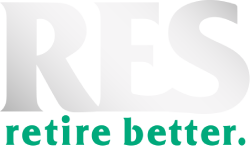The 76 million U.S. baby boomers that have reached or are nearing retirement age are living very different lives to the generation before them. Some are working longer (with reduced working hours), others are returning to study, while many are living more active lifestyles. Most retirees are wanting to age in place – close to their friends, family, and within their already established communities.
Releasing home equity can be a powerful financial planning tool, helping to balance short- term concerns with long-term goals. In short, equity release is a method of unlocking the value of your property and turning it into income. One way to do this is through a government-insured Home Equity Conversion Mortgage (HECM) – commonly known as a reverse mortgage – designed for homeowners over the age of 62 years.
HECM loans provide tax-free* liquid cash reserves with no monthly mortgage payments. Unlike a traditional mortgage, the lender can offer you a lump-sum payment, a stream of payments, or a line of credit that you can access based on the amount of equity you have in your property. You can use this cash flow for anything you wish: to hold off on drawing social security and pension payouts, to eliminate monthly mortgage payments and increase cash flow**, or to cover unexpected expenses such as medical and nursing care.
Like traditional mortgages, there are costs associated with securing an HECM loan. You’ll need to pay an origination fee, an appraisal fee, a mortgage insurance premium (MIP) and closing costs. Although these fees can be significant (depending on your circumstances), some of them are capped and some can be financed with the loan proceeds. The insurance premium offers you the peace of mind that you or your heirs will never have to pay more than the value of your home in the event of your death or if you sell the property.
In order to qualify for a reverse mortgage loan, you’ll need to be at least 62 years (you could be eligible for some loans from 55 years), your home needs to be your primary residence, and you need to have sufficient equity in your home, which varies by age. Your chosen lender will also need to review your financial situation to ensure that you’re able to meet your loan obligations.
The retirement research: what the numbers say
Retirement income is declining
Research has shown that not enough people are saving adequately for their retirement1. What’s more, the percentage of retirees that are covered by a traditional defined benefits (DB) pension plan that pays a lifetime annuity has been steadily declining over the past 25 years2.
Longer lives require better planning
On average, a man turning 65 today can expect to live to 83, while a woman can expect to live until 85 years. About one out of every four 65-year-olds will live past the age of 90 and one in ten will live past the age of 953
Herd mentality and market volatility
Less sophisticated investors may find it costly to assimilate and analyze information on their own and, as a result, tend to mimic what more successful investors do4 . But herd mentality and overreacting to market volatility is short-term thinking. For optimum long-term results, it’s best to ignore the road bumps along the way and ride out the upwards trajectory.
Tax-free retirement income
One of the best ways to increase retirement income is to minimize your tax liability. If your monthly income combined with your pension is significant, you’re likely to pay taxes on 85% of your social security benefits, and your total tax rate might be as high as 37%5 . Loan proceeds from reverse mortgages are not considered income, so they are a fantastic financial tool to help minimize your tax burden*.
Planning for healthcare
Recent research shows that approximately 65% of U.S. citizens over the age of 65 will require some type of long-term healthcare services, which assists the elderly with daily activities such as dressing, bathing, and using the bathroom6. After retirement, having a monthly income stream that can cover unexpected medical expenses plus the costs of long-term nursing care is essential.
Leveraging home equity to fund retirement
Research shows that 28% of Americans in their sixties have less than $50,000 saved for retirement7. And, without making any changes to their savings and investment strategies, 74% of retirees would fall short of their income needs by 62 years old8. It’s no surprise that 47% of retirees plan to tap into their home equity to boost their retirement income9.
1Engen et al., 2005; Malroutu & Xiao, 1995; Mitchell & Moore, 1998
2The Disappearing Defined Benefit Pension and its Potential Impact on the RetirementIncomes of Boomers, Social Security Administration, Butrica, Iams & Smith, 2009
3 Calculators: Life Expectancy, Social Security Administration, 2016
4 Herd Mentality in the Stock Market: On the Role of Idiosyncratic Participants withHeterogeneous Information, Dang & Lin, 2016
5 2020 Tax Brackets, Tax Foundation, 2021
6 Who needs care?, Administration on Aging, 2020
7 Here’s how much Americans have saved for retirement at different ages, CNBC, 2020
8 Are Retirees Falling Short? Reconciling the Conflicting Evidence, Boston College Centre forRetirement Research, 2014
9 Retirement Check-in Survey, Ameriprise Financial, 2013
*Loan proceeds are not considered income, so are paid out tax-free. Please consult your tax advisor.”¨**You’ll need to continue to pay for property taxes, homeowners insurance, any Home Owners Association (HOA) dues and home maintenance costs.
Three strategies to maximize your retirement portfolio
HECM loans can help you reach your retirement goals, feel more confident about the future,
and maintain a higher quality of life as you live out your golden years.
- Buffering your investments
Markets can be volatile, directly affecting the value of your investment portfolio. A reverse mortgage can be an effective funding source to buffer sequence-return risk (the risk of withdrawing from a retirement account during a market downturn, which can detract from overall returns). Using an HECM loan as an income supplement or to eliminate monthly mortgage payments can also allow you to optimize your tax obligations. Speak with your tax advisor for more information. - Convert home equity into a liquid asset
A reverse mortgage gives you several payment options. One of these is a line of credit, which enables you draw the loan proceeds whenever you wish, in amounts you choose, until you have used it up. This option enables you to convert a portion of your home equity into a liquid asset which will realize growth independently from the housing market, thereby diversifying your risk. - Finance a retirement home
As retirees generally spend more time at home, some are looking to upgrade their living situation to enjoy their later years in more comfort. Not only can a HECM loan finance a new home, but also provide a cash-flow stream to help meet monthly payments. If you’re over the age of 62, you plan to continue living in your home for the rest of your life, and you’re able to meet the loan requirements, this could be an excellent option to consider.
We appreciate that choosing the right equity-release partner is a big decision. As always, its advisable to check references and carefully evaluate any financial institution that you’re considering as a lender. Retirement Equity Solutions (powered by Magnolia Bank) will work with you to understand your financial circumstances and personal requirements before curating a mortgage option to suit your individual needs. If you’re interested in finding out more, contact us to speak to an advisor.


